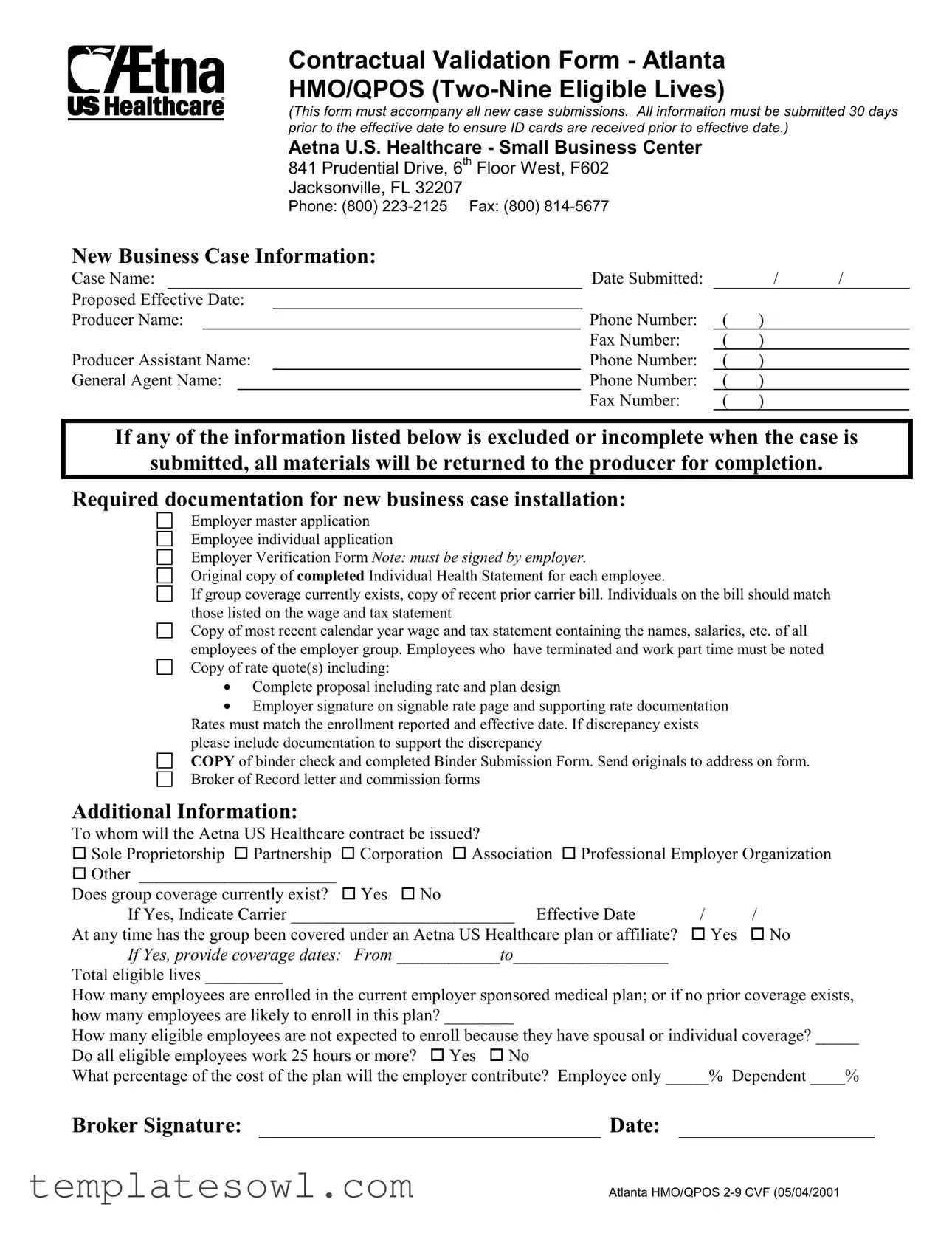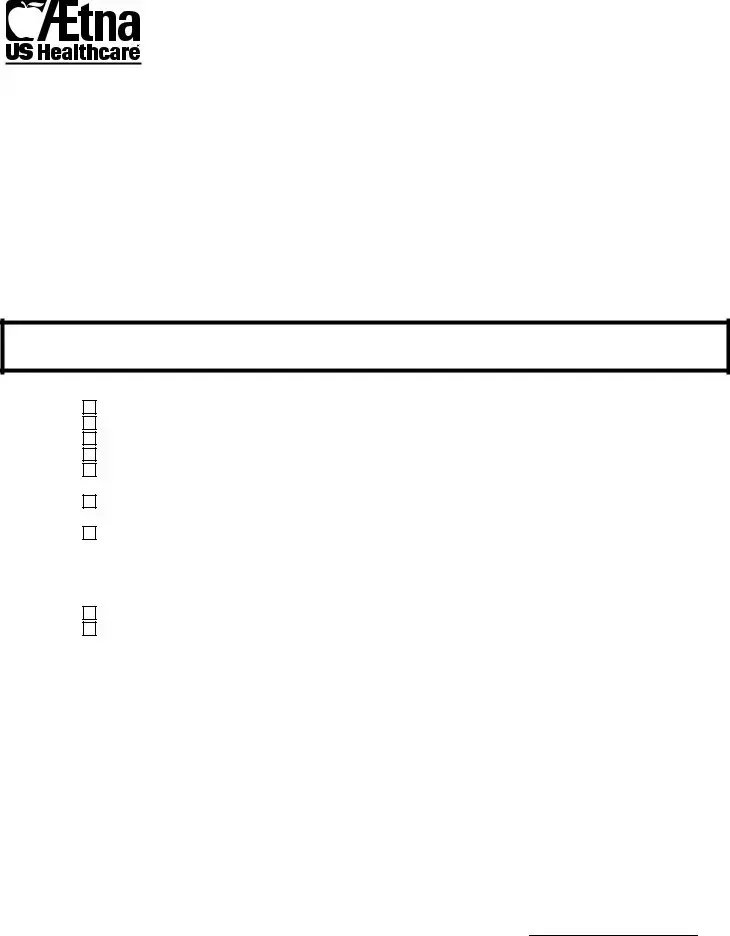What is the purpose of the Aetna Validation Form?
The Aetna Validation Form is essential for the smooth processing of new business case submissions. It ensures that all necessary details and documentation are collected, submitted correctly, and received in a timely manner. Completing this form accurately helps facilitate the issuance of ID cards before the effective date of coverage.
When should the Aetna Validation Form be submitted?
This form must be submitted at least 30 days prior to the proposed effective date of coverage. Timely submission allows adequate time for processing and ensures that all ID cards are distributed before the coverage begins, minimizing any disruptions for employees.
What information is required to complete the Aetna Validation Form?
The form requires a variety of details, including the case name, date submitted, proposed effective date, and contact information for the producer and any assistants. Additionally, required documentation such as the employer master application, employee individual applications, and relevant financial statements must accompany the submission.
What happens if the form is incomplete or inaccurate?
If any part of the form or the required documentation is missing or incorrect, the materials will be returned to the producer for completion. This can delay the entire submission process, potentially pushing back the effective date of coverage.
What documentation must accompany the Aetna Validation Form?
A complete submission should include the employer master application, completed individual health statements for each employee, a signed Employer Verification Form, and copies of relevant financial documents such as wage and tax statements. Additionally, if there is existing group coverage, recent prior carrier bills need to be provided for validation.
Can the Aetna Validation Form be submitted for groups with existing coverage?
Yes, the form can be submitted for groups with existing coverage. In fact, it is important to indicate any current coverage and provide details about the existing carrier and effective dates. This information helps Aetna assess the new coverage accordingly.
Is a Broker of Record letter necessary for submission?
Yes, a Broker of Record letter is required, along with any commission forms, to establish authorization and ensure that all parties involved receive appropriate acknowledgment and compensation for their roles in the business case submission.
What should be done if discrepancies arise in enrollment numbers?
If there is a discrepancy between the reported enrollment numbers and the submitted information, supporting documentation must be provided to justify these differences. It is crucial to clarify and resolve any inconsistencies to avoid delays or complications.
How can I contact Aetna for assistance with the validation form?
If assistance is needed, you can reach Aetna directly through their designated phone line at (800) 223-2125. Additionally, fax communications can be sent to (800) 814-5677 for queries or submission of accompanying documentation.

